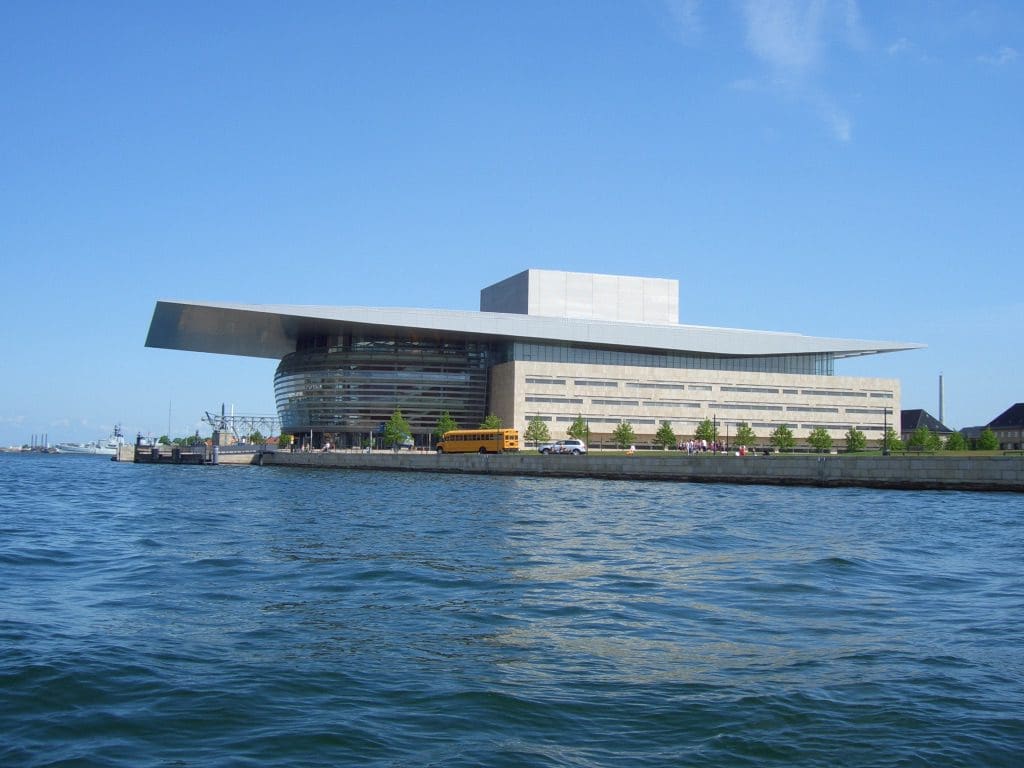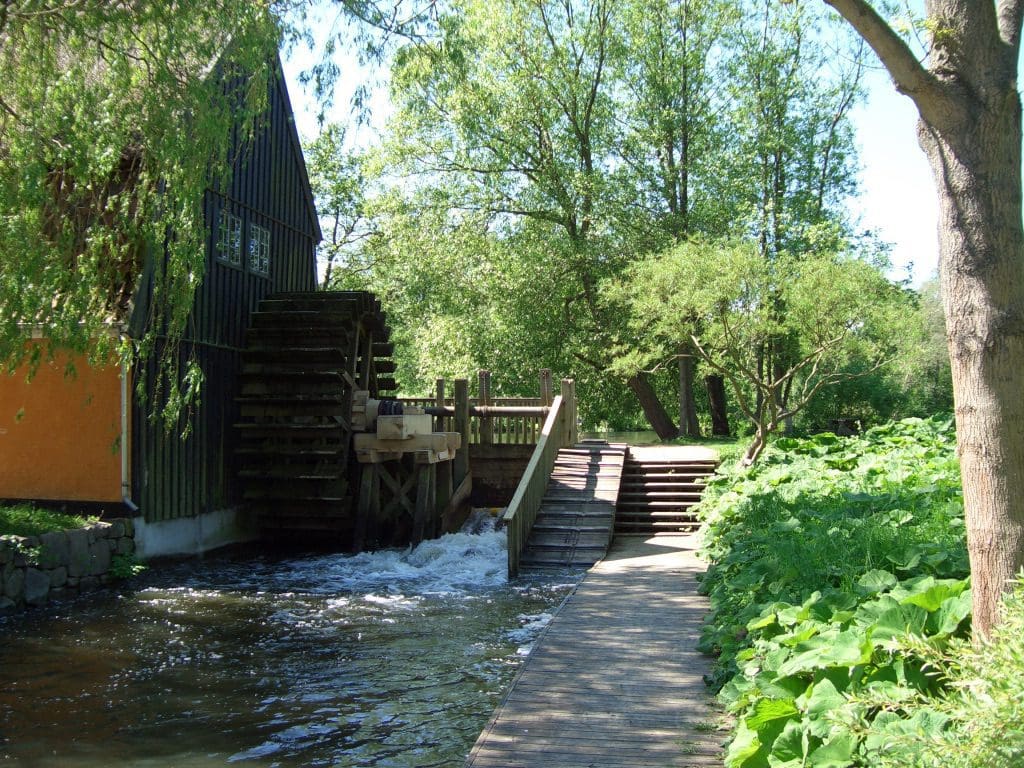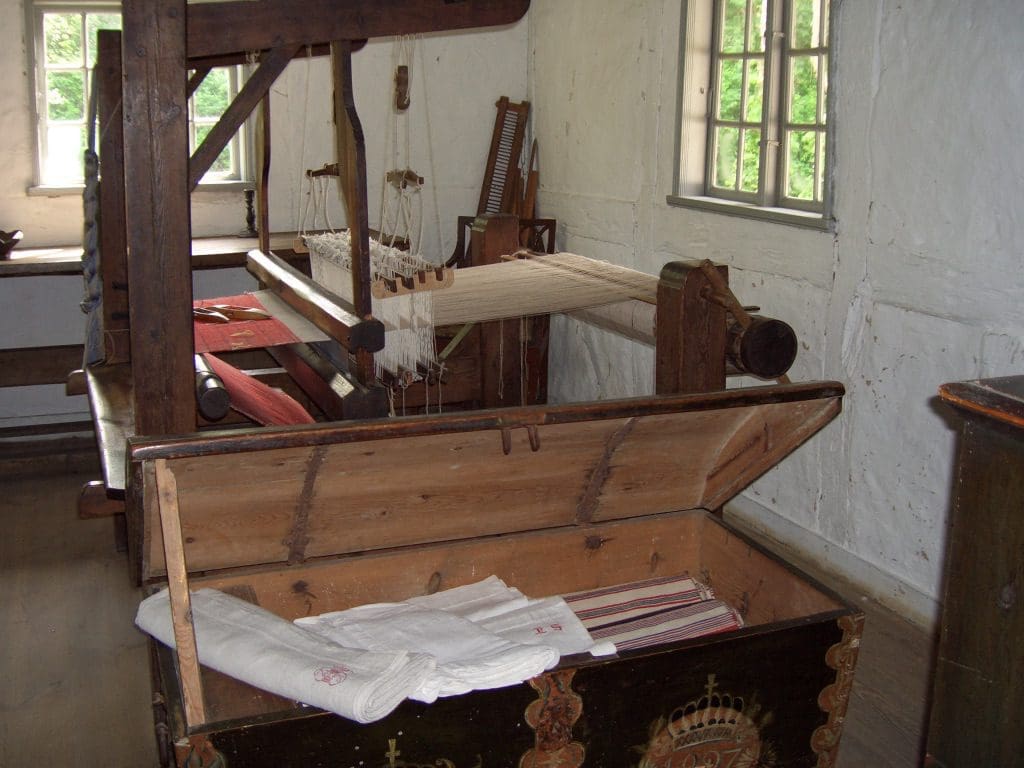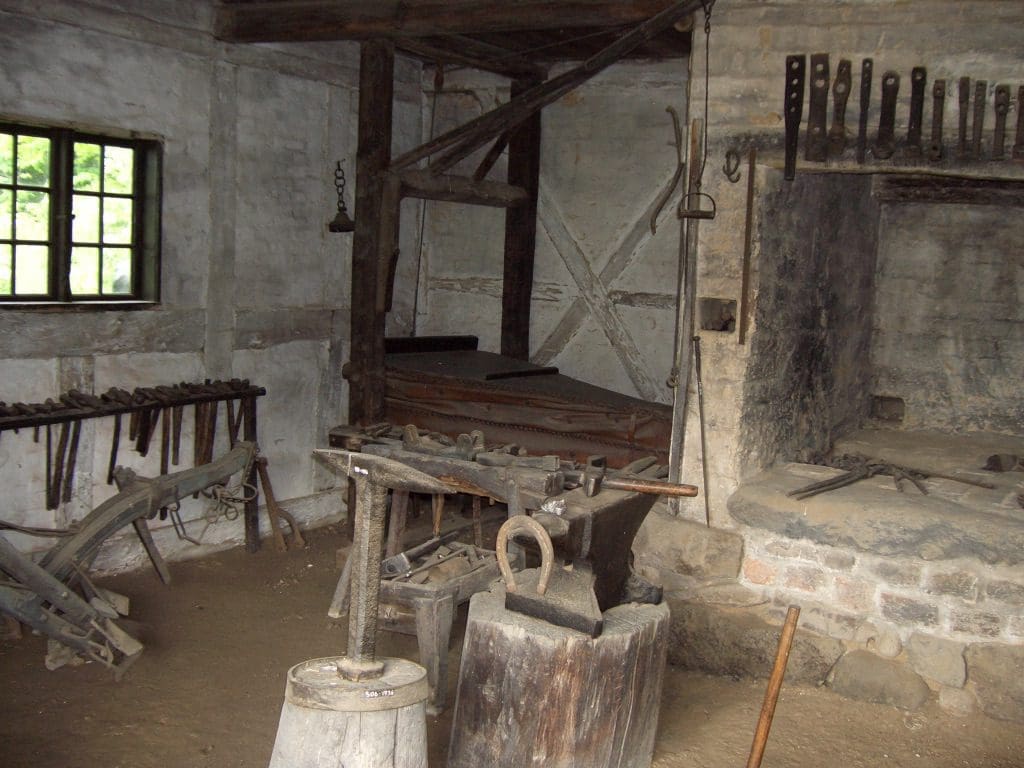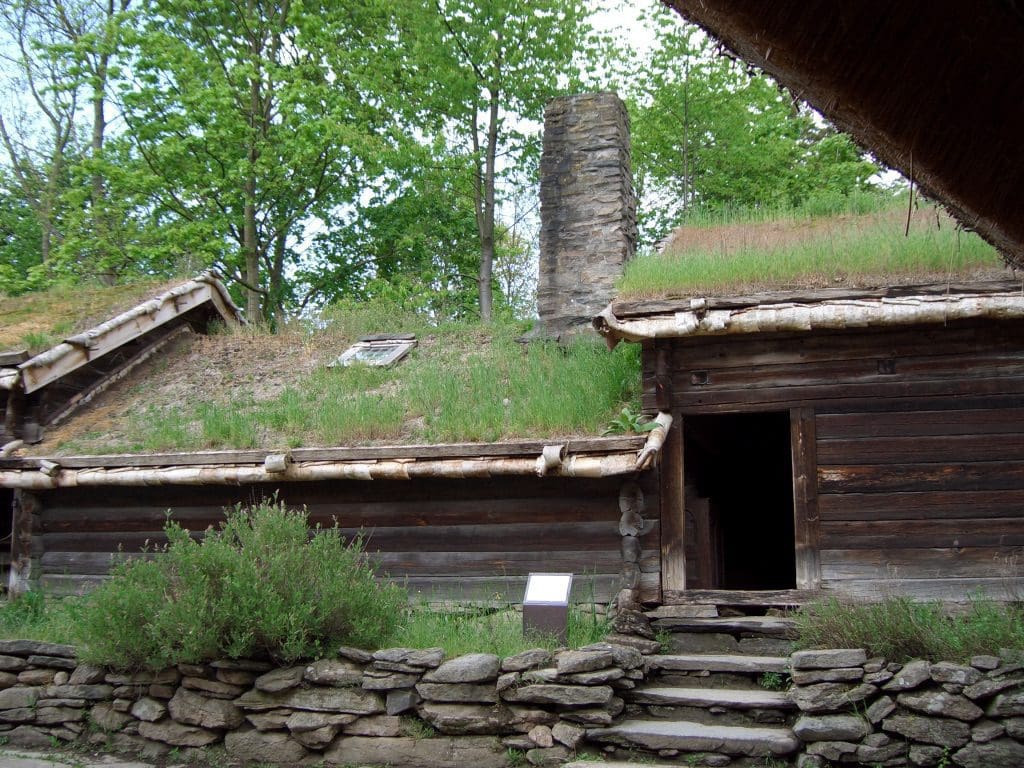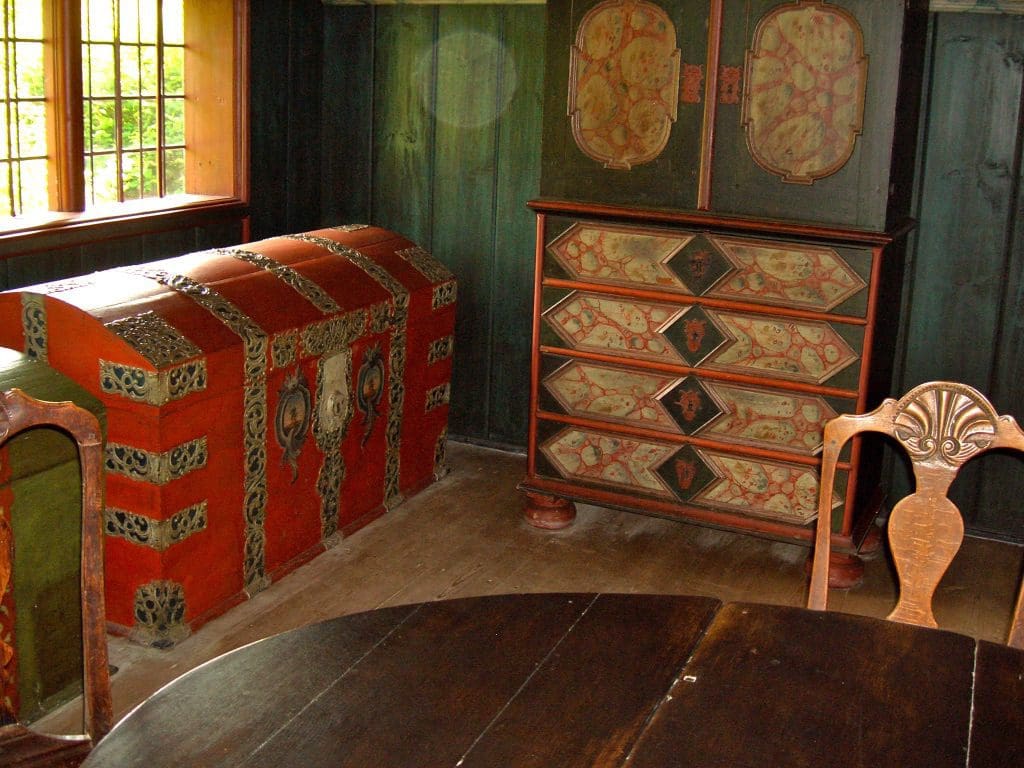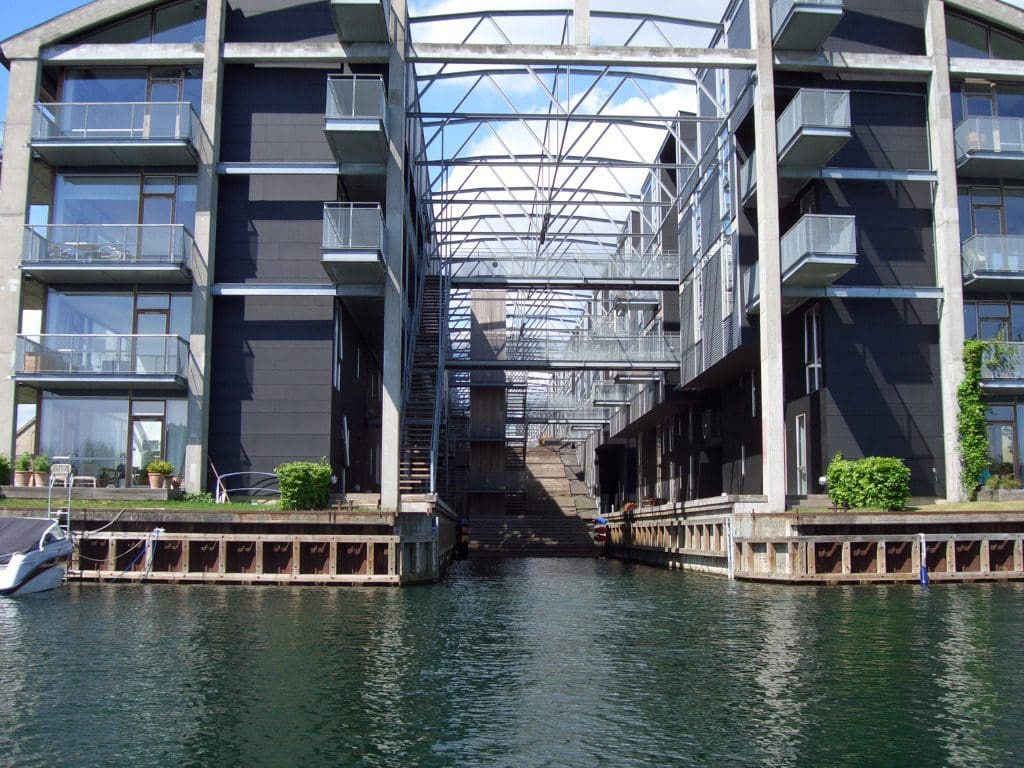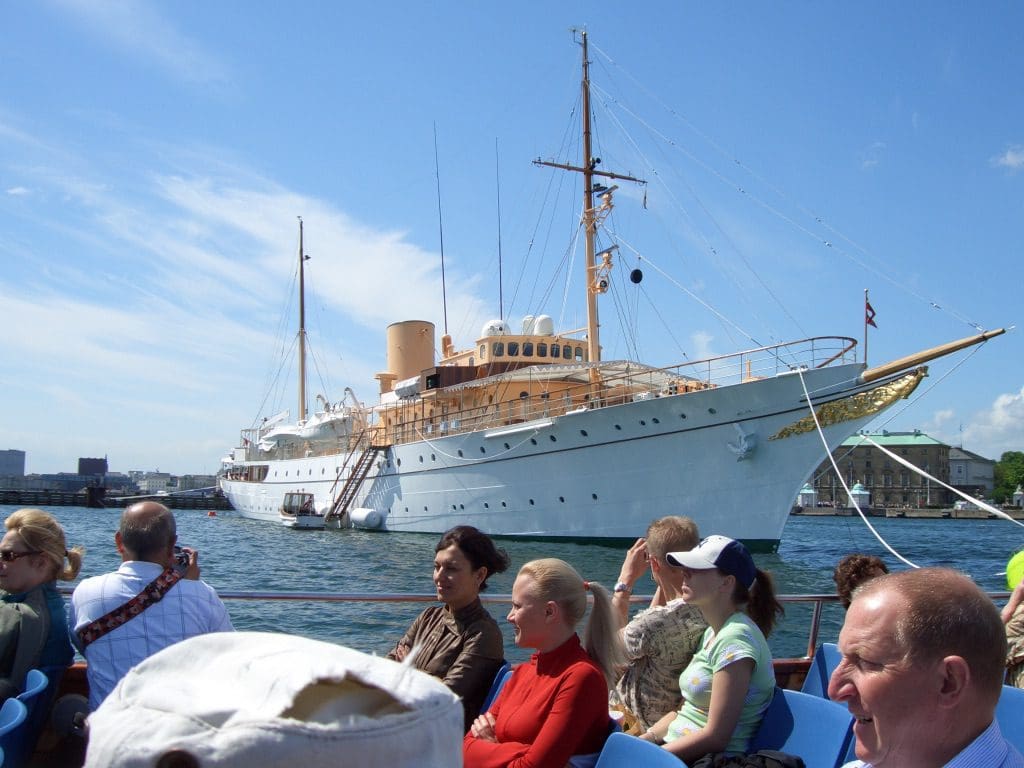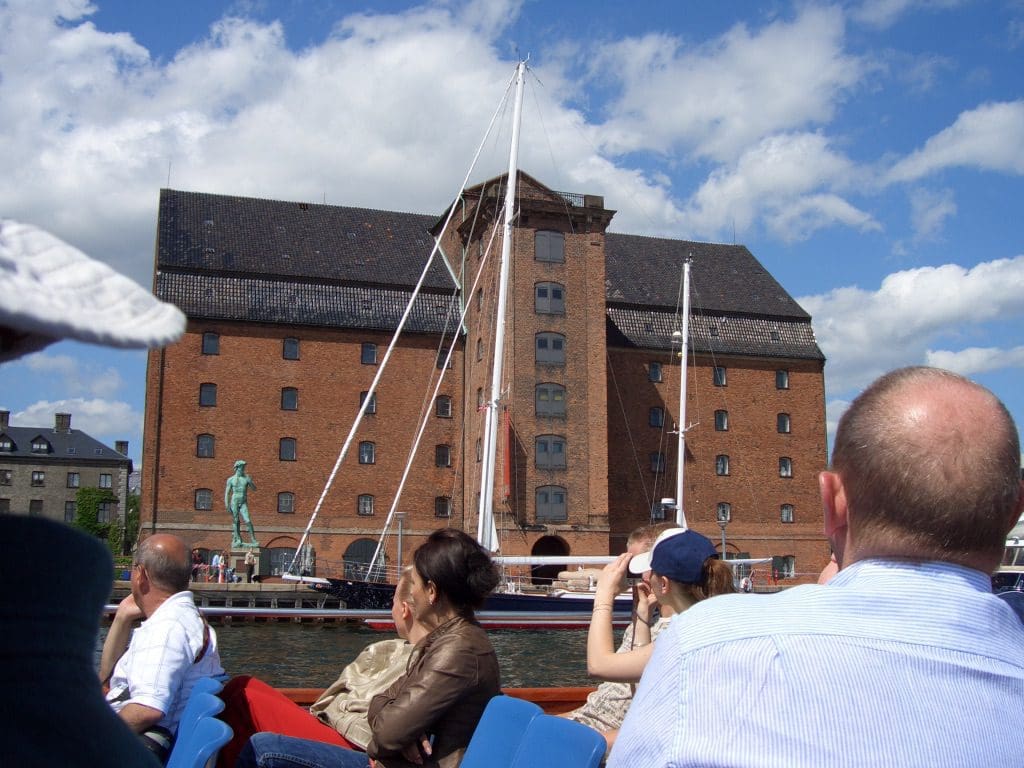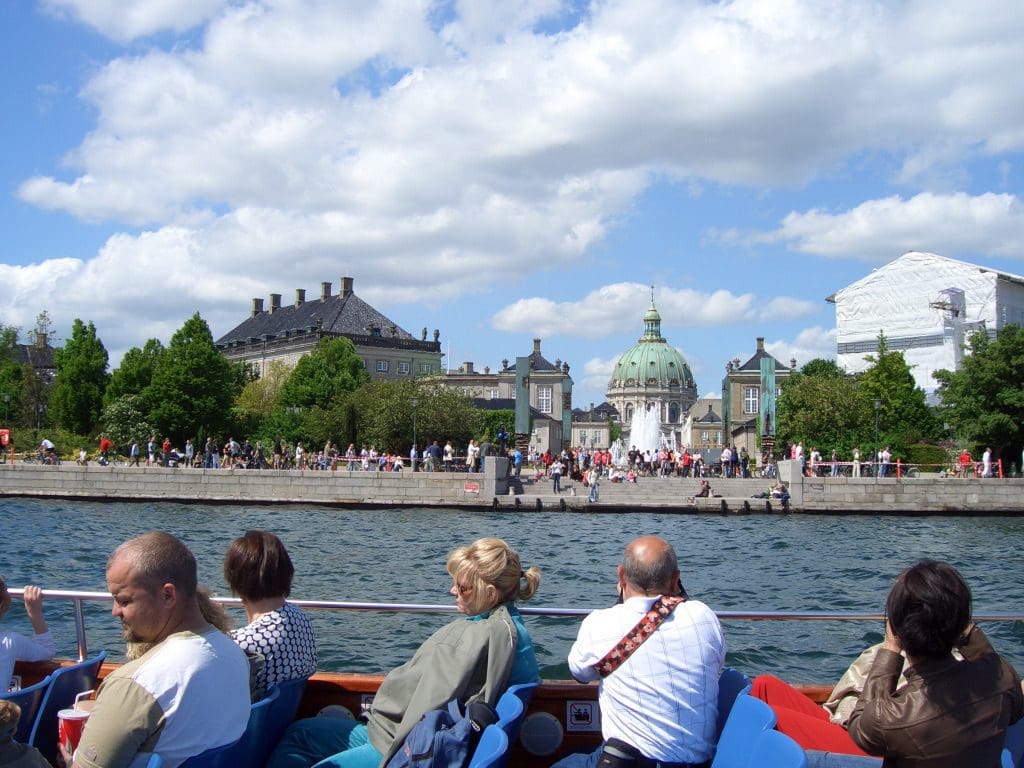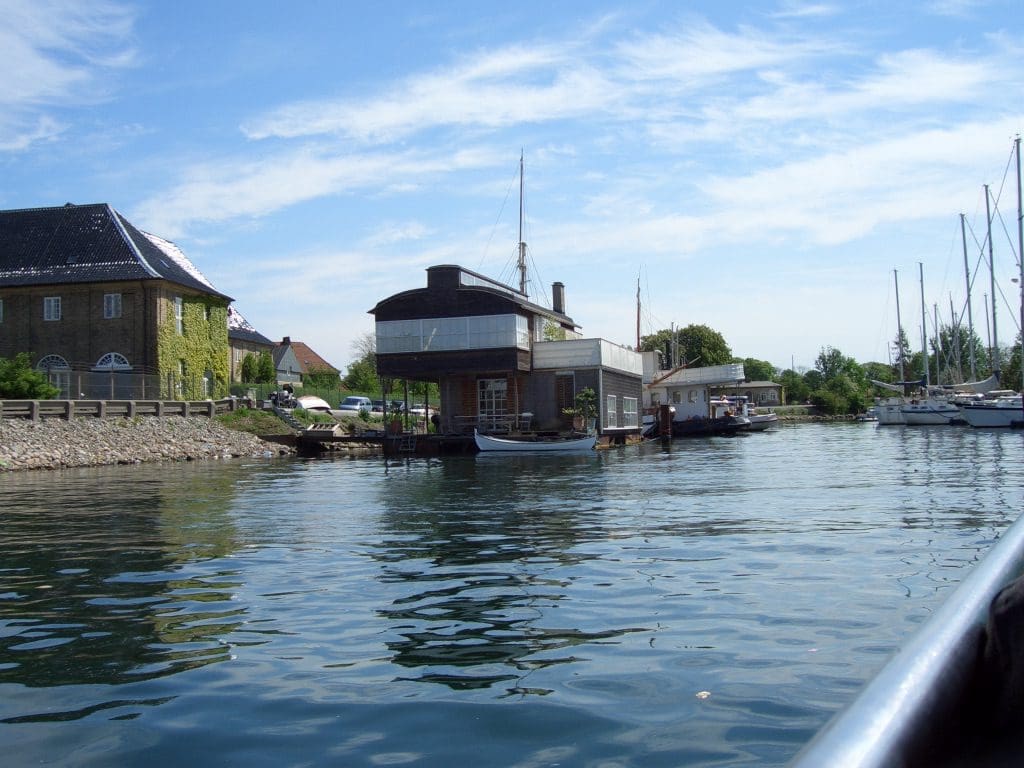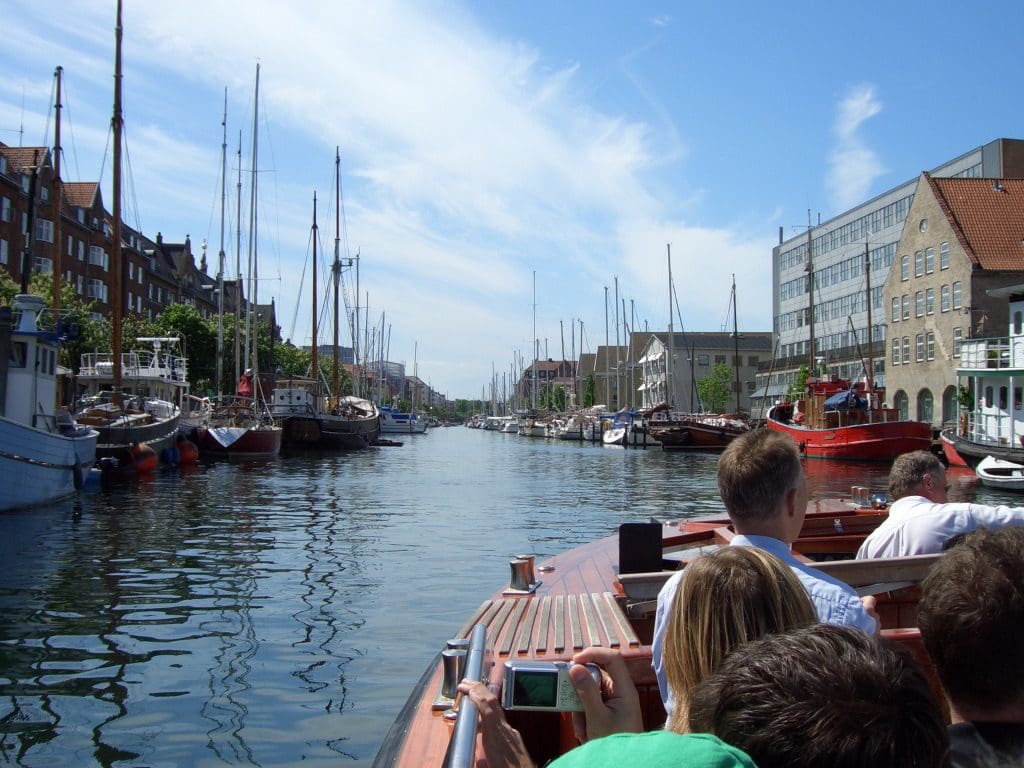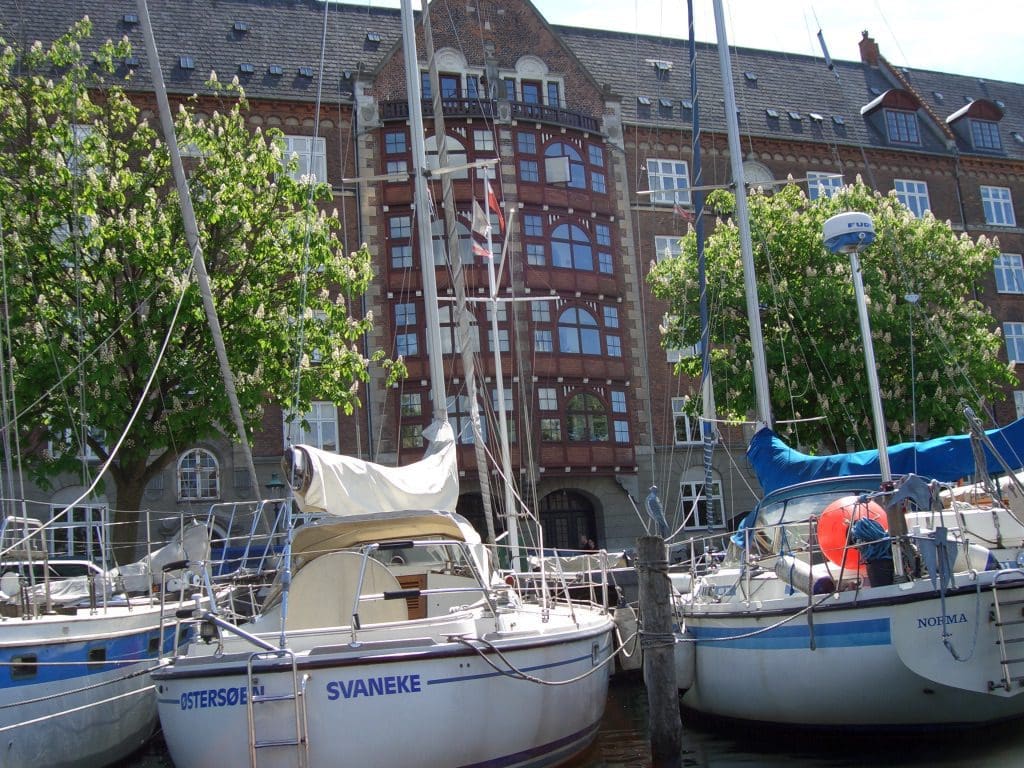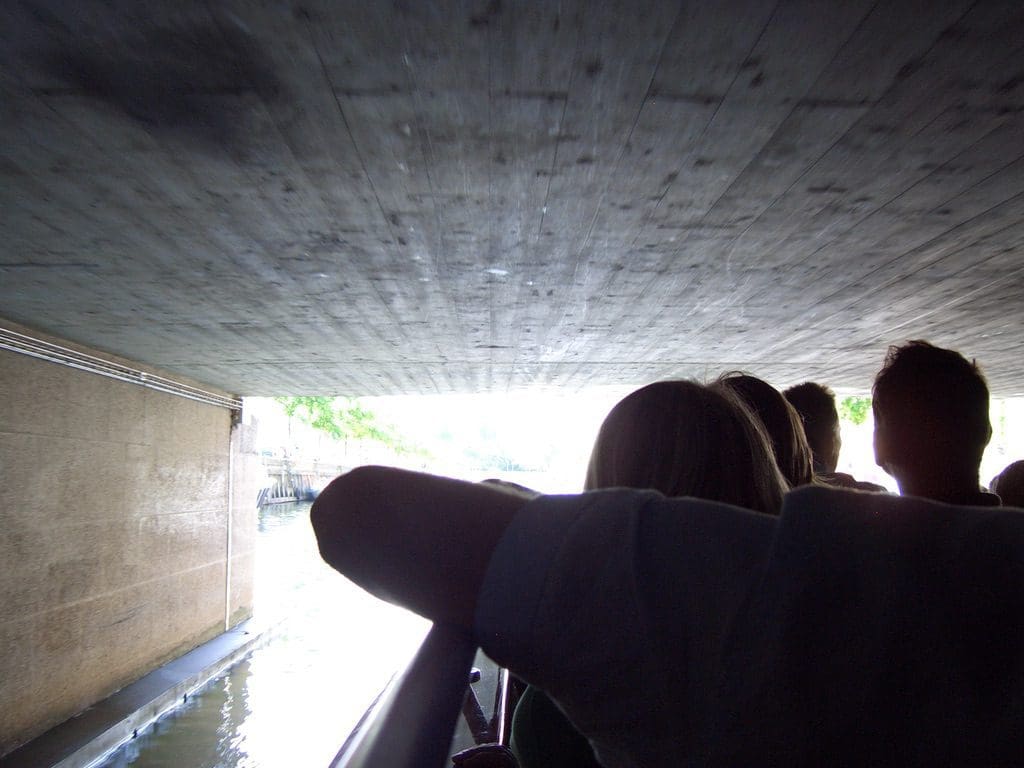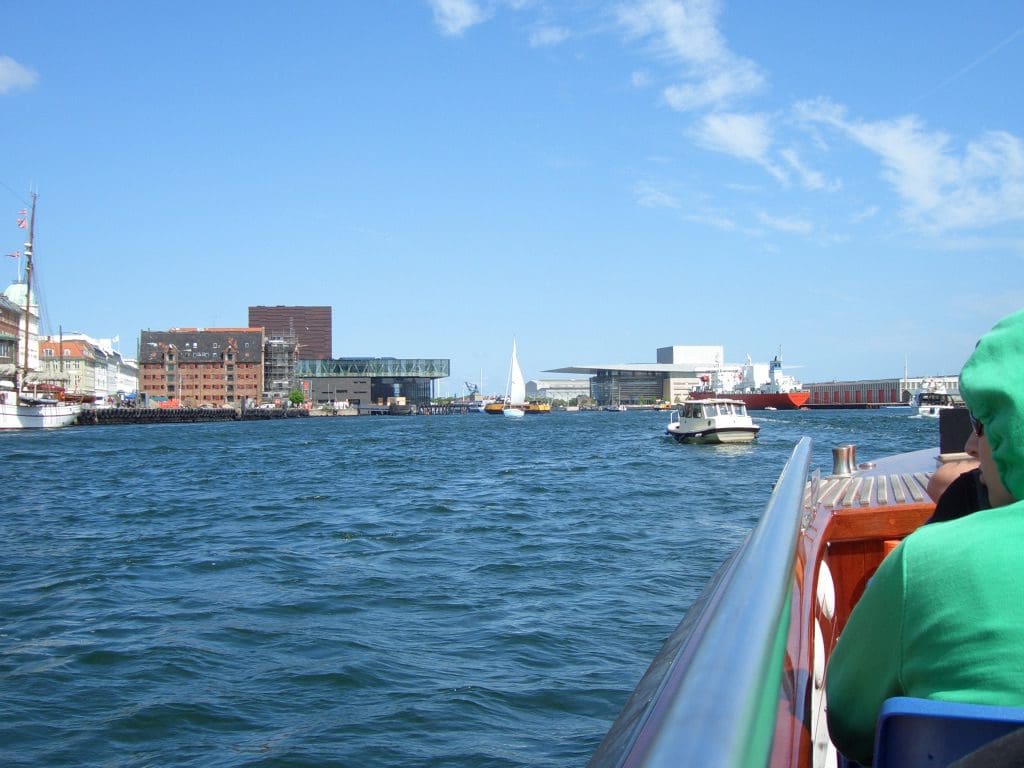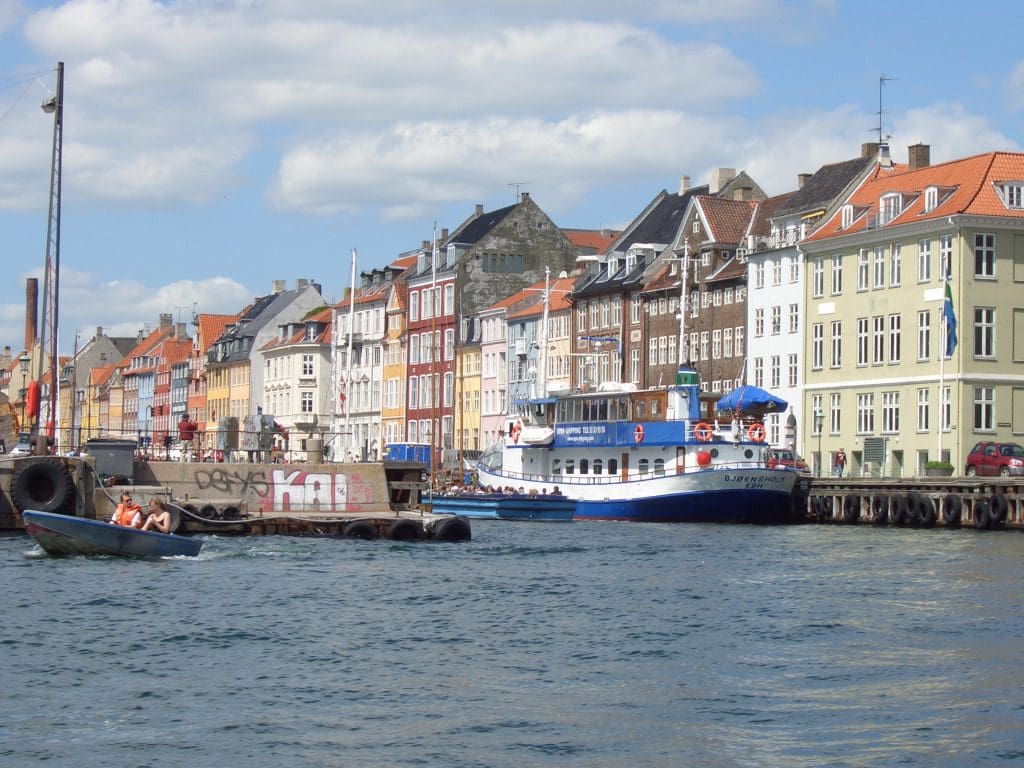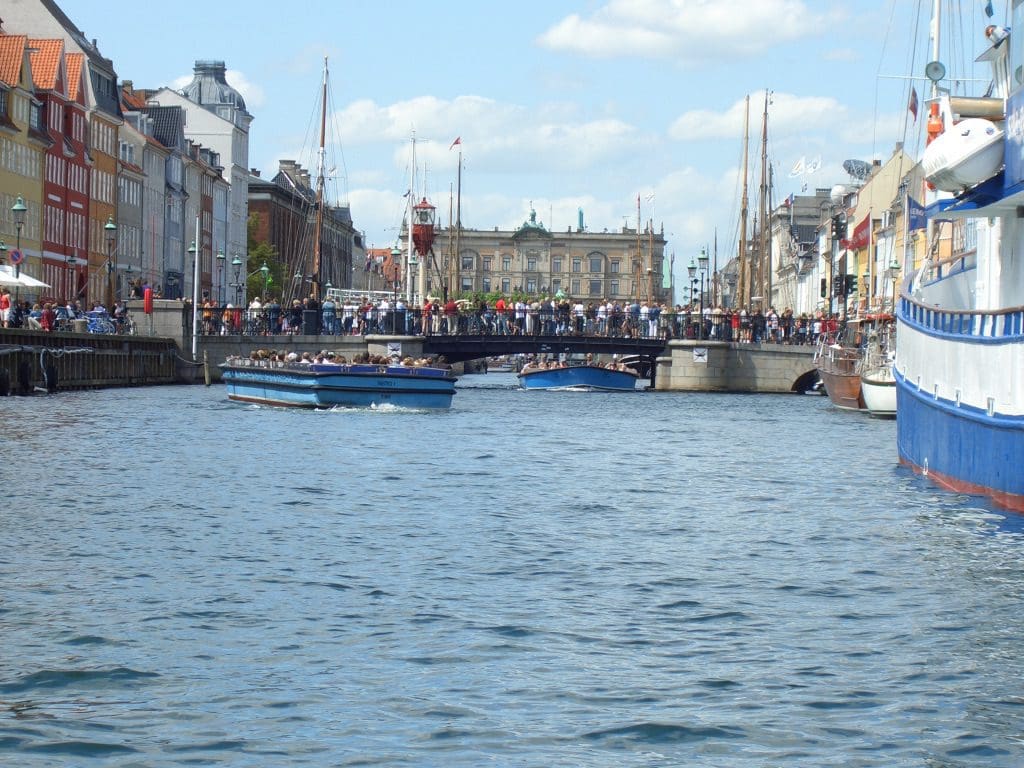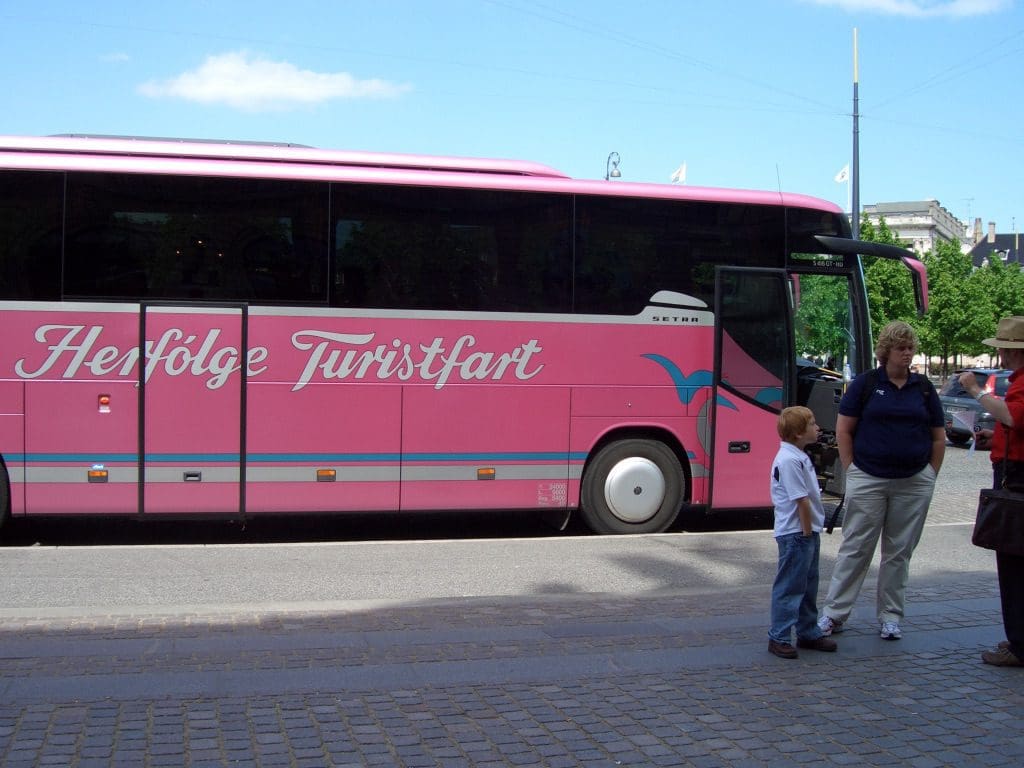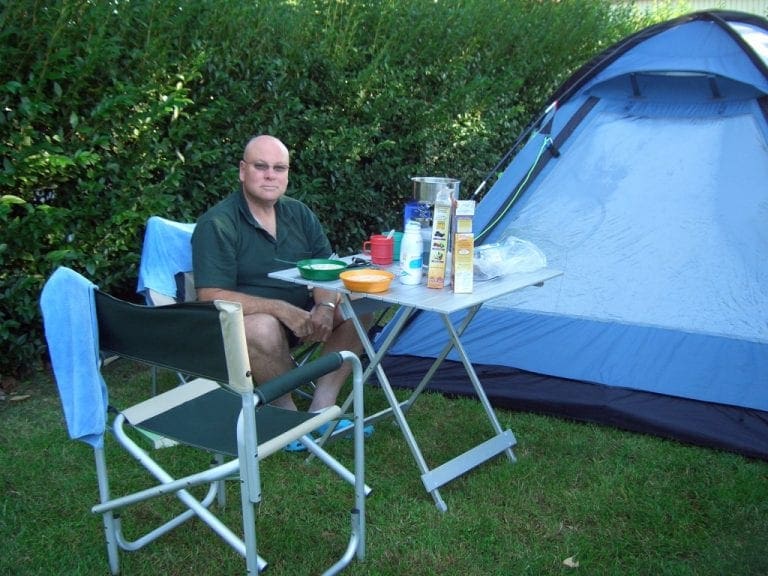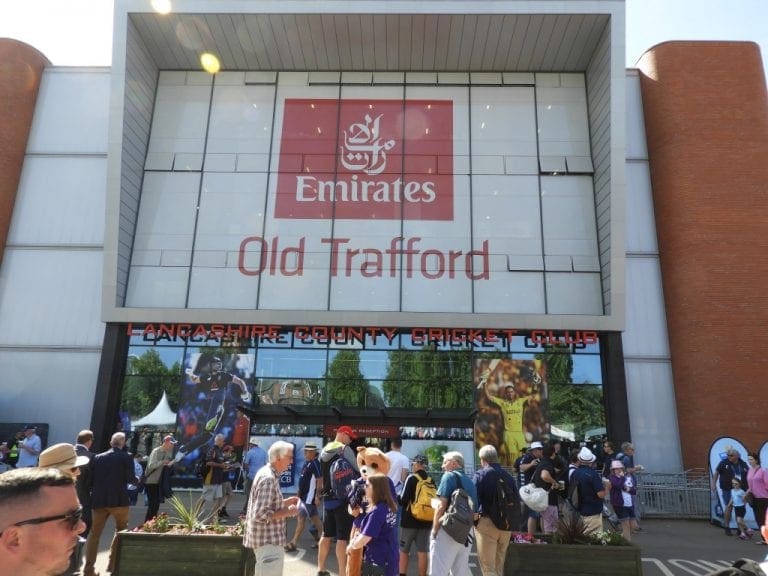Denmark 2
14/5 Geoff had his usual run in at the supermarket near the office today. (This was where he had his gloves kicked around the store when he tried to use his Visa card last Feb.) Lined up in a line of 5 people. The person at the head of the line was having the usual discussion about ‘it cost 50 cents more than I have with me, I want to take something off’. Only one checkout operating. Two young blades who looked as though they came straight of the set of Romeo + Juliette stood behind the line for 10 seconds. Marched over to an empty checkout. Thumped their bottle of drink down. An alarm sounded. A checkout chick appeared. Blades were served with reverence and departed. Most of the line behind Geoff moved to the newly opened lane. One old lady who wanted to put her shopping basket down rammed it into a couple who were standing slightly in the way and glared at them. This is a bizarre place.
Helen had a much better day making friends with the women of the campground (who returned stray lost socks from her washing).
15/5 A beautiful sunny day. Temp in the low tens, stiffish wild from the north, Danes in shorts. Geoff at the office. Helen braved the wilds of Lyngby and went for a walk along the lake shore. Doing some planning for France. Circles being put on maps.
16/5 Woke to beautiful blue sky, not a cloud. Helen had plans of walking around the Lyngby Lake. She did a little shopping first and because it was so fine a day, she took her rain coat out of her pack before she walked top the local supermarket. Mistake. It began to rain and she just made it back before the rain set in, in earnest. A significant deluge. If you need rain, send Bells. We will do it. Helen read her book. Geoff at work. Later that night we were offered a free wifi connection for our stay in Denmark. Thank you, thank you. It will make internet connection easy while we are here. Now we just have to work out what to do in France.
Geoff had a fall on the slippery decking of the cabin. He had just got over whacking himself in the knee with a shovel before we left Oz. The same knee got a good twist. Now makes clunking noises. We will see how we go. Bugger.
17/5 It rained most of the day. Rain or a very heavy dizzle. Very wetting and very unpleasant. It was a public holiday here today. Ascension day and every thing was shut. We had Mackers for dinner. First time on the trip. We did look for something open – too hard – retreated to the local Mackers. Today, we moved from the camp ground to a cheap hotel. Very new, opened last week. Spartan-ish, but dry and warm. The camp ground was fully booked out this weekend because of the holiday. We would have had to move back to the tent. In the rain, that would have been difficult.
18/5 Who would have believed it, a beautiful sunny day. Danes in shorts. We began with a brunch at Geoff’s workplace and then, because it was unofficial holiday, we went to another museum. This time the Louisiana, the modern arts museum. A beautiful building, overlooking the strait between Denmark and Sweden, built by an award winning architect – who forgot about parking (100 places and 500 cars turned up). Inside (eventually) were three exhibits all worth seeing – display of works by Julie Mehretu and Cindy Sherman and a display on Chinese modern art. The Danes clearly flock these things. A very good attendance. The museums are by no means cheap at $16 each entry.
Pizza for tea, made with a nice smelly cheese – a definite step up from Mozzarella. After dinner we found the new version of Top Gear on the box. The one with Richard Hammond back after his big crash. Very good to see him back.
19/5 Woke to rain. Spent the morning reading. Lunch from the esky. Sunny afternoon, so off to the Frilandmuseet again. This time we got through a few more houses and have now fulfilled our need to return. This time we found a huge 17th century farm house from south Denmark (really Germany) extremely wealthy, lots of huge old wooden houses from southern Sweden where timber is plentiful, a shoemaker’s house with a room filled with shoemaking tools, a lace makers house, a sawmill and finally, (number 81 of 83), a brilliant workshop from 1925 complete with metal lathes, stamping machines etc. They tried to reproduce the gardens around some of the houses. I could recognise most of the flowers and veg, however a vine that was growing up a very tall trellis puzzled me. Hops, of course. This lot have been brewing beer in their barns for centuries.
Still fairly full of people, though not as crowded as before. On return, watched the FA cup final live. To Charlies Burgers a local corner shop for tea. Would have liked to have eaten there and chatted with try friendly locals but both of us had to escape from the cigarette smoke.
20/5 A beautiful sunny day. It began with a scrum in the breakfast room when a large German woman decided she would not wait her turn and charged through the group assembled around the bread and coffee – everyone else standing well clear of the very determined woman. One can either get pissed off or laugh.
We went into Kopenhaven for the day – by train. Buying a ticket is always a challenge in a new place. Helen asked and very helpful chap pointed out that a ‘klick’ ticket would be cheaper than a return. He carefully explained about zones and how to negotiate the system. Payment for trains and parking seems to depend on an honesty system. Highly automated but no turn styles/boomgates etc. There must be someone checking tickets somewhere. On the train, we were seated behind a couple of very sad Goths. The one with her back to us (so that we never saw her) caused all Danes to stare open mouthed. Trains very clean. No graffiti. (Slide show, click here.)
Down town, we found the Kopenhagen marathon in full flight. We also found lots of Danes out in the sun just enjoying themselves – walking, cycling, sitting, drinking, talking, eating, etc. The city is very open without canyons caused by tall buildings, lots of parks and gardens and no litter. A mixture of old and new buildings that somehow fit together. Many of the old warehouses on the canals haven converted to very expensive apartments and offices. The opera house is brand new and in some respects reminds me of Sydney’s – glass, overlooking the water and the roof another form of sail. They are building a huge playhouse across the water from the opera house. This too should look spectacular, especially in the evening. The modern building that really caught my eye was an extension to the library, again overlooking water. They call it the black diamond. Its walls slope outwards slightly and it is designed to catch the reflection of the sun off the water. It was just sparkling today. We spent a very pleasant hour a half on one of the canal tour boats, ducking under the bridges and watching the city go by. Bikes are everywhere. Parked in groups of hundreds (Sometimes piled up when there has been a collapse of stands). Smoking is very common. (We are finding the smoking very intrusive.)
Then back to stay at our old friend the camp ground. We had bought an Oz flag and stuck it in the ground beside the cabin. The first person came past and looking at the flag said ‘ah you’re back. I did not know you were Canadians.’ Later we were accused of being Finns.
The camp ground has two large green bladders that kids bounce on. The largest is 15 metres square, the smaller is about half that. These are inflated each morning and deflated each night. The kids playground is much as we would have seen in Oz before the public indemnity insurance nonsense hit a few years ago. These are swings and things that kids can actually hurt themselves on. The outdoor museums certainly have the same practical approach that we used to take – ‘you are here at your own risk, take care of yourself, some things here will try to hurt you, be careful’. Instead of a sign on everything that has a bite in it and then the thing being removed because someone did/might hurt themselves.
Because of persistent rain, we are doing a bit of reading. We bought a few books in Dublin. Geoff read ‘A Long Long Way’ by Sebastian Barry, a novel of the Irish involvement in WW1 at the same time as the Easter rising and its aftermath. An excellent book with soft Irish prose describing the most horrific events. Short listed for the Booker. Highly recommended.
Last week, Helen read BBC reporter Kate Adie’s autobiography (Geoff is reading it now). A very humorous autobiography by a likeable woman. HB just finished ‘On the Road to Kandahar’ by Jason Burke – a British journalist who spent the best part of the last 20 years trying to understand the complexities of the Islamic world – particularly Afghanistan and the Middle East
Of course, by now Geoff has two different tools running to forecast how much we will spend for the 4 months (excluding airflight and car lease). We will see which is the most accurate.
In the three days we were at the hotel, the reeds in the lake grew up enough to hide the rubbish around the edge The newly sown grass went from ‘no grass but evidence of sowing’ to almost ready for a mow. A couple of good sunny days have had a pronounced effect.
